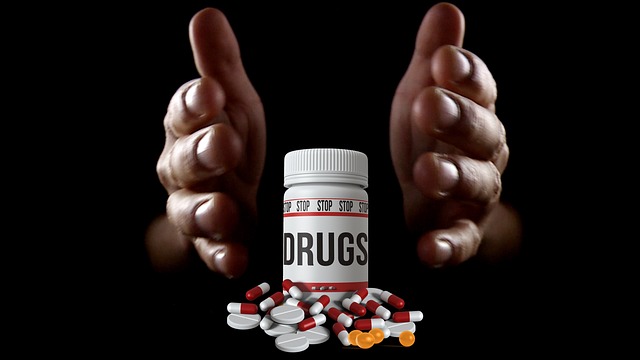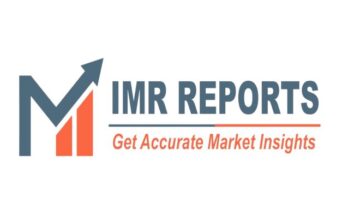The Neurological Disorder Drugs Global Market Report 2024 by The Business Research Company provides market overview across 60+ geographies in the seven regions – Asia-Pacific, Western Europe, Eastern Europe, North America, South America, the Middle East, and Africa, encompassing 27 major global industries. The report presents a comprehensive analysis over a ten-year historic period (2010-2021) and extends its insights into a ten-year forecast period (2023-2033).
Learn More On The Neurological Disorder Drugs Market:
https://www.thebusinessresearchcompany.com/report/neurological-disorder-drugs-global-market-report
According to The Business Research Company’s Neurological Disorder Drugs Global Market Report 2024, The neurological disorder drugs market size is expected to see strong growth in the next few years. It will grow to $108.05 billion in 2028 at a compound annual growth rate (CAGR) of 6.3%. The growth in the forecast period can be attributed to expanding therapeutic options and personalized therapies, a growing focus on disease-modifying treatments, the expanding use of digital biomarkers, and the increasing prevalence of neurological diseases. Major trends in the forecast period include advancements in drug design, advancements in neuroimaging, advancements in genetic research, collaborations and licensing agreements, and the emergence of regenerative medicine.
The increasing prevalence of neurological diseases is expected to propel the growth of the neurological disorder drugs market going forward. Neurological disorders refer to the conditions affecting the brain, spinal cord, and nerves caused by structural, biochemical, or electrical abnormalities, leading to various symptoms. The increase in neurological diseases is attributed to the aging global population and greater exposure to environmental, metabolic, and lifestyle risk factors. Neurological disorder drugs play a critical role in managing these complex conditions, offering relief from symptoms, slowing disease progression, and improving long-term outcomes for patients. For instance, in September 2021, according to a report published by the UK Parliament, a UK-based government body, the number of people waiting to begin neurology treatment increased to 140,482 in June 2021, up from 134,245 in May 2021. Therefore, the increasing prevalence of neurological disease is driving the growth of the neurological disorder drugs market.
Get A Free Sample Of The Report (Includes Graphs And Tables):
https://www.thebusinessresearchcompany.com/sample.aspx?id=17207&type=smp
The neurological disorder drugs market covered in this report is segmented –
1) By Drug Class: Cholinesterase Inhibitors, N-Methyl-D-Aspartate (NMDA) Receptor Antagonists, Antiepileptic, Antipsychotic And Antidepressant, Other Drugs Classes
2) By Indication: Epilepsy, Alzheimer’s Disease, Parkinson’s Disease, Multiple Sclerosis, Cerebrovascular Disease, Other Indications
3) By Route Of Administration: Oral, Parenteral, Other Routes Of Administration
4) By Distribution Channel: Hospital Pharmacy, Retail Pharmacy, Online Pharmacy, Other Distribution Channels
5) By End-Users: Hospitals, Specialty Clinics, Homecare, Other End Users
Major companies operating in the neurological disorder drugs market are focusing on developing innovative Ocrelizumab drug therapies to enhance treatment efficacy, improve patient outcomes, and expand therapeutic options for individuals with multiple sclerosis. Ocrelizumab is a humanized monoclonal antibody used as a therapeutic drug in the treatment of multiple sclerosis (MS), a type of neurological disorder. For instance, in February 2024, Roche Holding AG, a Switzerland-based pharmaceutical company, launched Ocrevus (Ocrelizumab), a new disease-modifying therapy (DMT) drug for the treatment of multiple sclerosis in India. Ocrevus is the first and only approved DMT for both relapsing-remitting multiple sclerosis (RRMS) and primary progressive multiple sclerosis (PPMS), based on over 10 years of clinical and real-world data. It is a monoclonal antibody that targets CD20-positive B cells, which are believed to play a role in the autoimmune attack on the central nervous system in multiple sclerosis (MS). Ocrevus is used to treat both relapsing-remitting MS (RRMS) and primary progressive MS (PPMS), making it the first drug approved for both forms of the disease. It is administered intravenously, typically every six months, and has shown efficacy in reducing disease activity and disability progression in clinical trials.
The neurological disorder drugs market report table of contents includes:
1. Executive Summary
- Neurological Disorder Drugs Market Characteristics
- Neurological Disorder Drugs Market Trends And Strategies
- Neurological Disorder Drugs Market – Macro Economic Scenario
- Global Neurological Disorder Drugs Market Size and Growth
.
32. Global Neurological Disorder Drugs Market Competitive Benchmarking
- Global Neurological Disorder Drugs Market Competitive Dashboard
- Key Mergers And Acquisitions In The Neurological Disorder Drugs Market
- Neurological Disorder Drugs Market Future Outlook and Potential Analysis
- Appendix
Contact Us:
The Business Research Company
Europe: +44 207 1930 708
Asia: +91 88972 63534
Americas: +1 315 623 0293
Email: [email protected]
Follow Us On:
LinkedIn: https://in.linkedin.com/company/the-business-research-company
Twitter: https://twitter.com/tbrc_info
Facebook: https://www.facebook.com/TheBusinessResearchCompany
YouTube: https://www.youtube.com/channel/UC24_fI0rV8cR5DxlCpgmyFQ
Blog: https://blog.tbrc.info/
Healthcare Blog: https://healthcareresearchreports.com/
Global Market Model: https://www.thebusinessresearchcompany.com/global-market-model




